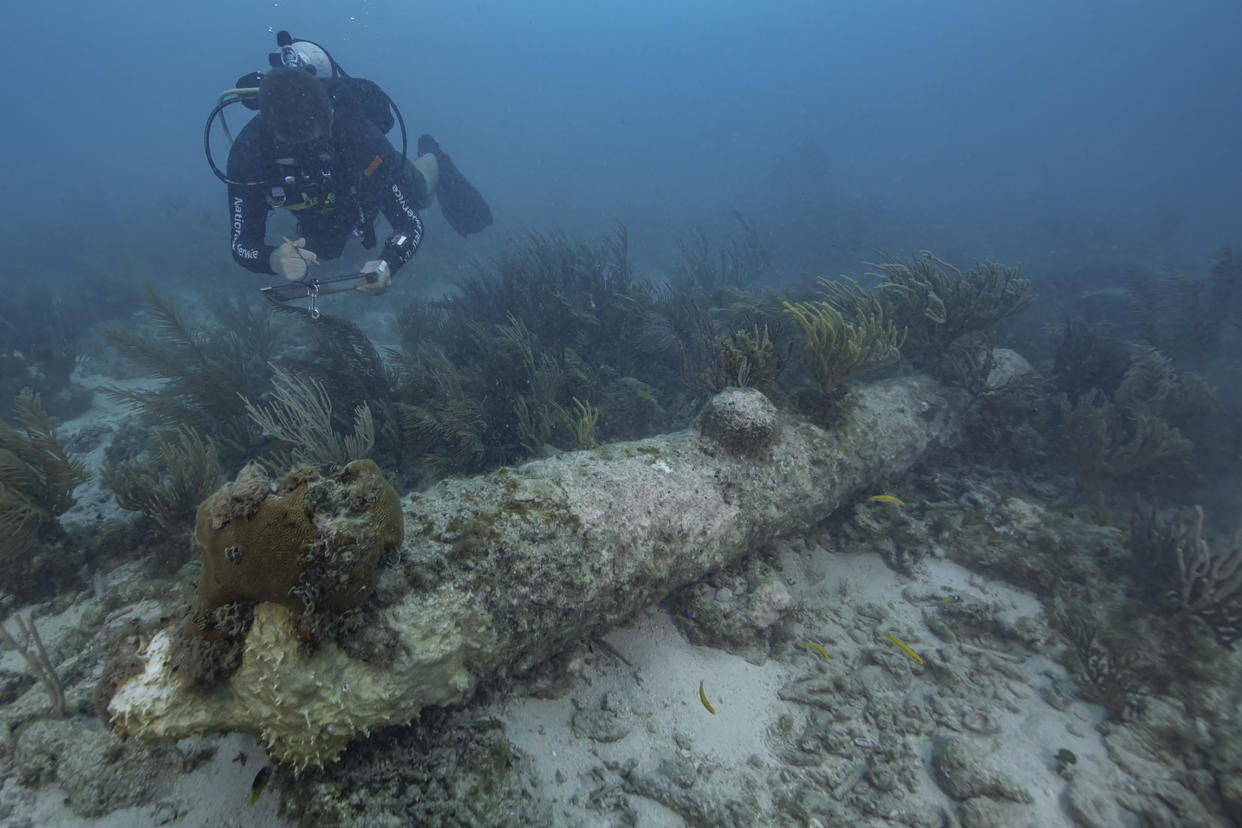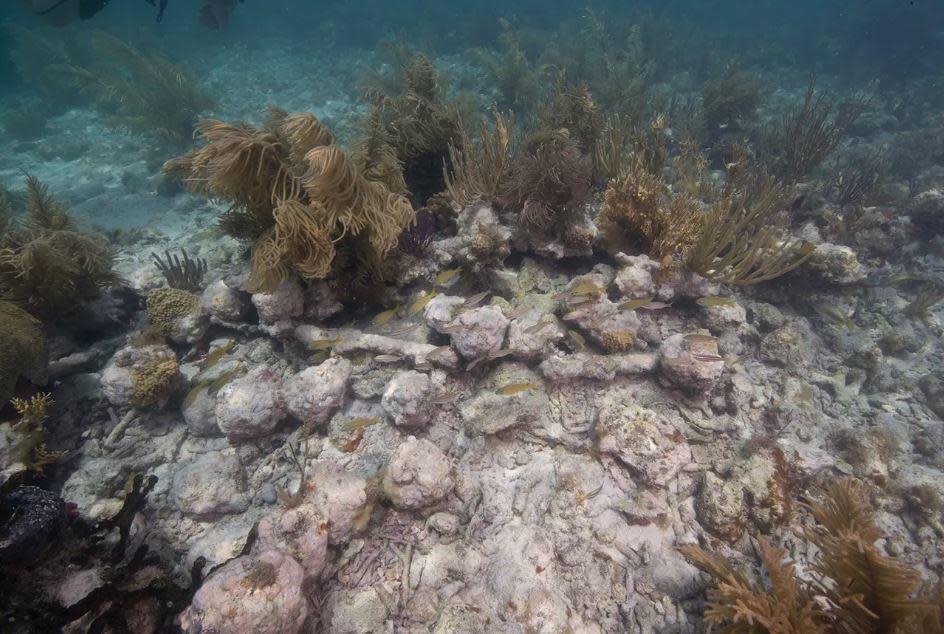Warship identified off Florida coast 3 centuries after it sank
A British warship has been identified off the Florida coast nearly three centuries after it sank while on patrol in the waters of what is now Dry Tortugas National Park, officials said. HMS Tyger went down with hundreds of sailors on board and the surviving crew were marooned on an uninhabited island for more than two months before making a dramatic escape on makeshift boats.
The shipwreck was initially located in 1993 off of Key West, but new research by archeologists has confirmed definitive evidence that the wreck is indeed the 50-gun frigate HMS Tyger, the National Park Service said on Thursday.
The ship sank on Jan. 13, 1742, after it ran aground on the reefs of the Dry Tortugas during the Anglo-Spanish War, a nine-year conflict between Britain and Spain, officials said. Old logbooks described how the crew "lightened her forward" — presumably by offloading heavy equipment — after initially running aground, briefly refloating the vessel and then sinking.

Archeologists in 2021 surveyed the site and found five cannons, between 6- and 9-pounders, about a quarter mile from the main wreck site. Experts were finally able to determine they were indeed cannons thrown overboard when the warship first ran aground. Based on this, archaeologists have concluded the wreck first located in 1993 was in fact HMS Tyger.
"Archeological finds are exciting, but connecting those finds to the historical record helps us tell the stories of the people that came before us and the events they experienced," said Park Manager James Crutchfield. "This particular story is one of perseverance and survival. National parks help to protect these untold stories as they come to light."
About 300 crewmembers were on board HMS Tyger when it wrecked, and the survivors spent 66 days marooned on an island of what is now Garden Key, park officials said.
"The stranded survivors battled heat, mosquitoes and thirst while attempting to escape the deserted island," the park service said.
The crew burned the remains of the warship to make sure its guns did not fall into enemy hands. Ultimately, they built makeshift boats from salvaged pieces of HMS Tyger and "made a 700-mile escape through enemy waters" to Jamaica. The journey took 55 days.
HMS Tyger was the first of three British warships to sink off the Florida Keys, the park service said. Archeologists previously identified the locations for HMS Fowey and HMS Looe.
"This discovery highlights the importance of preservation in place as future generations of archeologists, armed with more advanced technologies and research tools, are able to reexamine sites and make new discoveries," said Josh Marano, the maritime archeologist who led the team that identified HMS Tyger.
The site is already protected under cultural resource laws that apply to Dry Tortugas National Park, but the positive identification of HMS Tyger offers additional protection under the Sunken Military Craft Act of 2004, officials said. The remains of HMS Tyger and its artifacts remain the property of the British government.
Park officials say shipwrecks at Dry Tortugas face a variety of natural and himan threats, including major storms, erosion, illegal excavation, theft, vandalism, and physical damage from surface activities.
"The public plays an important role in helping the National Park Service to preserve and protect HMS Tyger and other submerged archeological resources for this and future generations," the service said.
The archaeologists' findings were recently published in the International Journal of Nautical Archaeology.

This article has been updated to correct a reference to the size of the canons.
Havana Syndrome evidence suggests who may be responsible for mysterious brain injuries
Indian Relay horse race dubbed “America's original extreme sport” | 60 Minutes
5-year Havana Syndrome investigation finds new evidence of who might be responsible
